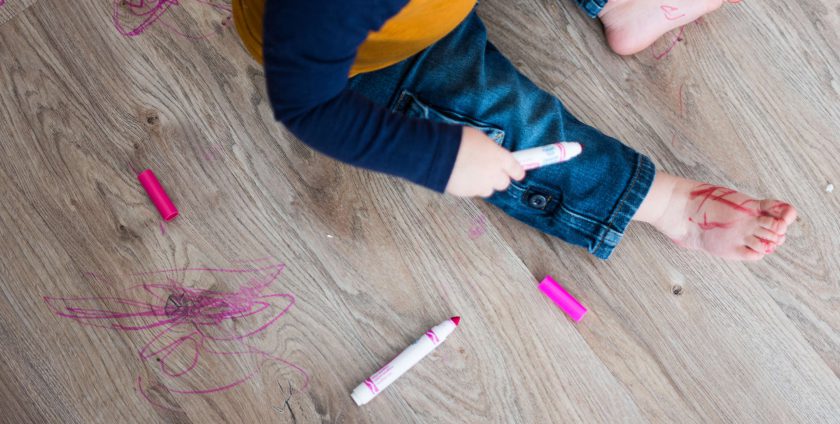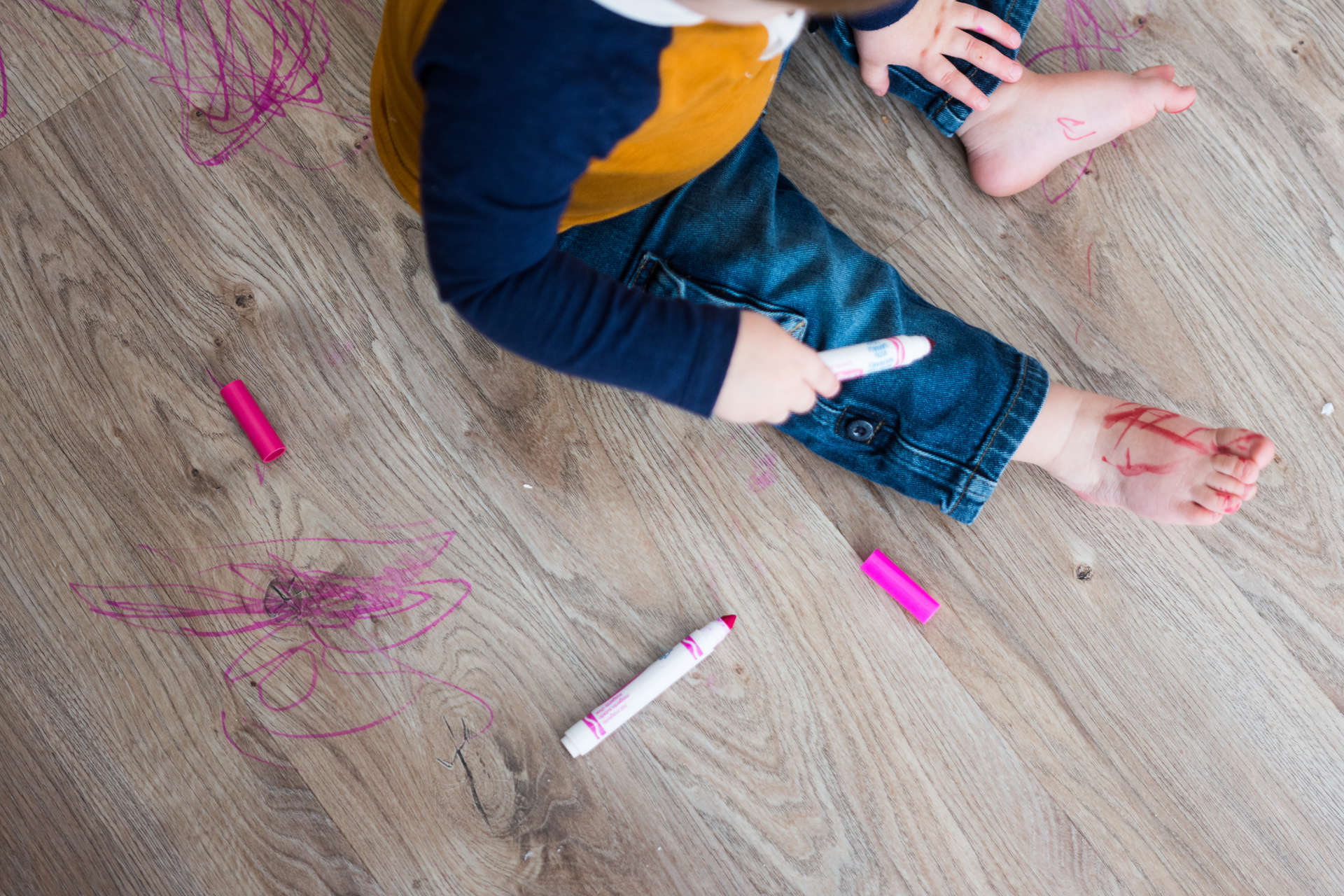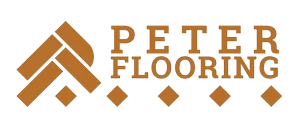
Which hardwood floors are best to use for children?
Kids can give hardwood floors a hard time. They tend to play rough and can come up with some inventive games, using all kinds of props. In addition to the children’s games, hardwood floors also need to withstand highchairs, push toys, a variety of plastic wheels and even hot wheel races. This then begs the question that we hear so often, which type of wood flooring is family-friendly and durable enough to withstand this kind of wear and tear?

Before getting to the list of the most durable options in hardwood floors for kids, let me point out a few things first. Firstly, note that all hardwood floors tend to scratch and dent over time (refer to section 3 for scratch prevention tips). This simply cannot be avoided, regardless of your choice and how carefully you tend to your floors. This is simply an unavoidable fact. We will provide you with information on the various types of hardwood that are most durable and some handy tips to minimize the inevitable damage. Keep in mind that you want to enjoy your home and your hardwood floors.
Secondly, it is best to choose a hardwood floor that can be sanded and refinished because scratches and dents do happen. It is a good idea to have a backup plan ready.
Thirdly, be prepared that you may find it hard to choose between your style preference and the wood type that is most durable. It can sometimes be challenging but only you would know what your main priorities are and what would be the best option for you and your family.
Allow me to share some tips and advice on the following points:
1. Most durable family-friendly hardwood floors (wood options, color, finish, type and style)
2. Hardwood floors best to avoid
3. Tips to reduce scratching and damage to hardwood floor
Let’s jump right in.
1. Most durable family-friendly hardwood floors
The best choice in hardwood flooring Chicago for kids are the hardest wood types with stronger graining, like oak and hickory.
Scratches and dents are better camouflaged and less obvious on hardwoods that have stronger graining. Some examples of these types of woods are red oak, white oak and hickory. These species are all grown in the US and therefore more readily available. Oak is the less expensive type, which certainly is a bonus.
2. Hardwood floors that are lighter in color
Floors that are lighter show less scratches and the same goes with dirt, it’s not as easily visible. When a floor gets scratched it shows the underlying raw wood, which is often light in color. Lighter floors match better with the raw wood and the contrast is therefore less, making it harder to spot damage. Going with a natural or lighter hardwood can thus be a good idea.
3. High grades of polyurethane Hardwood with an extra coat of poly
For hardwood floor refinishing, we recommend that you use a high-grade oil-based polyurethane, alternatively you can also use a high-grade water borne poly.
It is important that you apply enough coats of poly. We recommend that you apply at least 3 coats. You could apply a fourth coat if the hardwood floors see above-average foot traffic or if you have darker hardwood floors.
Another option to extend the life of your hardwood floor is to apply the “screen and recoat” option. This involves applying another coat of poly 3-4 years after you refinish the floors, but before too much new wear and tear becomes visible. This is a great preventative maintenance step.
4. Finishes in either Satin or Matte
Scratches, dents and dirt are easier visible on a shiny surface. Consider this when choosing a finish for your floors. We recommend a satin or matte finish which will keep your floors looking good for longer and are easier to maintain. It so happens that satin or matte finishes look smart, which makes it a win-win situation.
5. Harder wood types
All in all, the harder types of hardwood floors are simply more durable. You could look at the following exotic hardwoods: Brazilian Cherry, Brazilian Walnut or Brazilian Teak, as these are harder than most species. Having said this, there are some trade-offs for you to consider. The listed exotic hardwood types tend to be darker in color, therefore could show scratches and dents a bit more compared to lighter wood. Maple can be a good choice as it is harder than oak and light in color, which makes it a good combination. The drawback of maple is that it is more expensive, presents more overall challenges and, bearing in mind long-term costs, is more expensive to refinish when that time comes.
6. Solid hardwood flooring vs. engineered hardwood flooring
A better hardwood option for kids and high-volume floor traffic households is solid hardwood. It’s a given that your floors will get scratched, therefore it is important to be able to refinish your floors over time. Solid hardwood floors make this an ideal option, unlike a laminate floor installation for instance.
7. Choose between Pre-finished and Site finished floors
Researching this topic online will show conflicting opinions. Both options have advantages when looking for a kid friendly option. Prefinished hardwood has the advantage of most often having a harder finish because of the aluminum oxide. This is great for extra protection against scratches. Consider contacting a flooring company, like PETER Hardwood Flooring, to get expert advice and insight into the various options.
8. Hand scraped or distressed character grade floors
As mentioned previously, scratches and dents will appear over time. It is helpful when these imperfections are camouflaged. You can achieve this through choosing distressed or hand-scraped floors. These types of floors have plenty of character of their own, with lots of knots and color variations. Character or rustic grades are a good example of this. Wear and tear over time will blend in, look natural and give the floor extra character.
- By: admin
- Category: Uncategorized
- 0 comment






